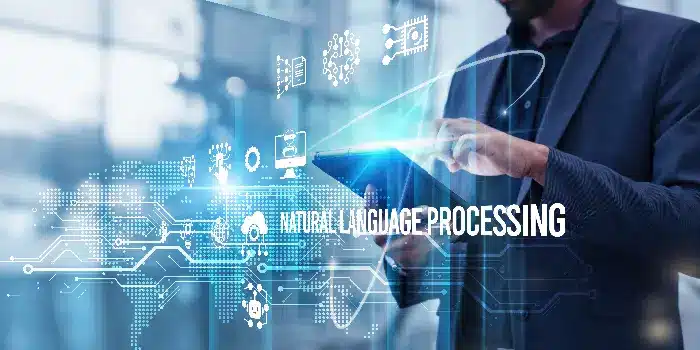AI Glossary
Natural Language Processing – Short Explanation
Natural Language Processing (NLP) is a branch of artificial intelligence that enables machines to read, interpret, and respond to human language. By analyzing both spoken and written text, NLP helps computers understand the structure, meaning, and intent behind human communication—even when it includes ambiguity, slang, or context-dependent expressions.
From virtual assistants and search engines to chatbots and translation tools, NLP is already embedded in many everyday technologies. Its effectiveness depends heavily on high-quality, diverse linguistic data to train AI models to handle the complexity of real-world language use.

Natural Language Processing in the Real World
Human languages are often ambiguous and difficult to understand. Sarcasm, irony, and other standard queues that people realize in person can often be misunderstood when written or only spoken. To fully understand human language, scientists and linguists have had to use tools to help computers understand the context, word ambiguities, word order, and other concepts. Natural Language Processing uses a computer to read and understand spoken and written language.
While NLP tools could be used to facilitate the translation of languages, they can be further expanded into helping a computer understand the intent of a question. Computers generally take each individual word in situ and do not understand the context. NLP allows computers to understand the different meanings and nuances, which enables them to respond correctly.
Tip:
Successful NLP models require more than just raw language data – they depend on precisely annotated examples that reflect real-world complexity, including idioms, code-switching, and contextual nuance.
LXT’s audio and text annotation services deliver multilingual, domain-specific datasets to accelerate the development of high-performing NLP systems.
Natural Language Processing in the World of AI
Natural Language Processing (NLP) is an area of Artificial Intelligence (AI) that strives to transform human languages into something that machines are able to understand.
NLP is more than just simple speed analytics. For example, the word “pass” has multiple different meanings –
- To pass a test or quiz
- To pass an item from one person to another
- To not partake in an activity
“Pass” can be used as a noun or a verb, so the only way to understand what is being said is to look at the whole sentence or phrase. To help computers understand the underlying meaning behind a word, different techniques are used.
Part-of-Speech-Tagging
By using self-learning AI algorithms, the context of individual words can be defined. The algorithms derive rules from the text as they peruse the information to describe other words further. An example of a rule might be that if the first word is a noun, then the word following is likely to be a verb.
Parse Trees
As each language has different rules for sentence structure, programmers incorporate these into the tool manually. Once this is done, the program utilizes tree diagrams to break down the whole sentence into specific phrases. This parsing builds a tree diagram of the different sentence elements, such as a proper noun, an article, and a verb.
Semantics
Once tagging and parse trees are completed, computers are at times still faced with a problem of understanding the meaning behind a phrase. It is at this stage that semantics comes into play. With semantics, the words preceding and following the specific word are also analyzed to understand the phrase’s meaning.
In this way, NLP uses a symbolic approach towards understanding the message based on already existing rules. NLP’s goal is for computers to have a clear comprehension of not only a word but also what a word means in context to a sentence.
